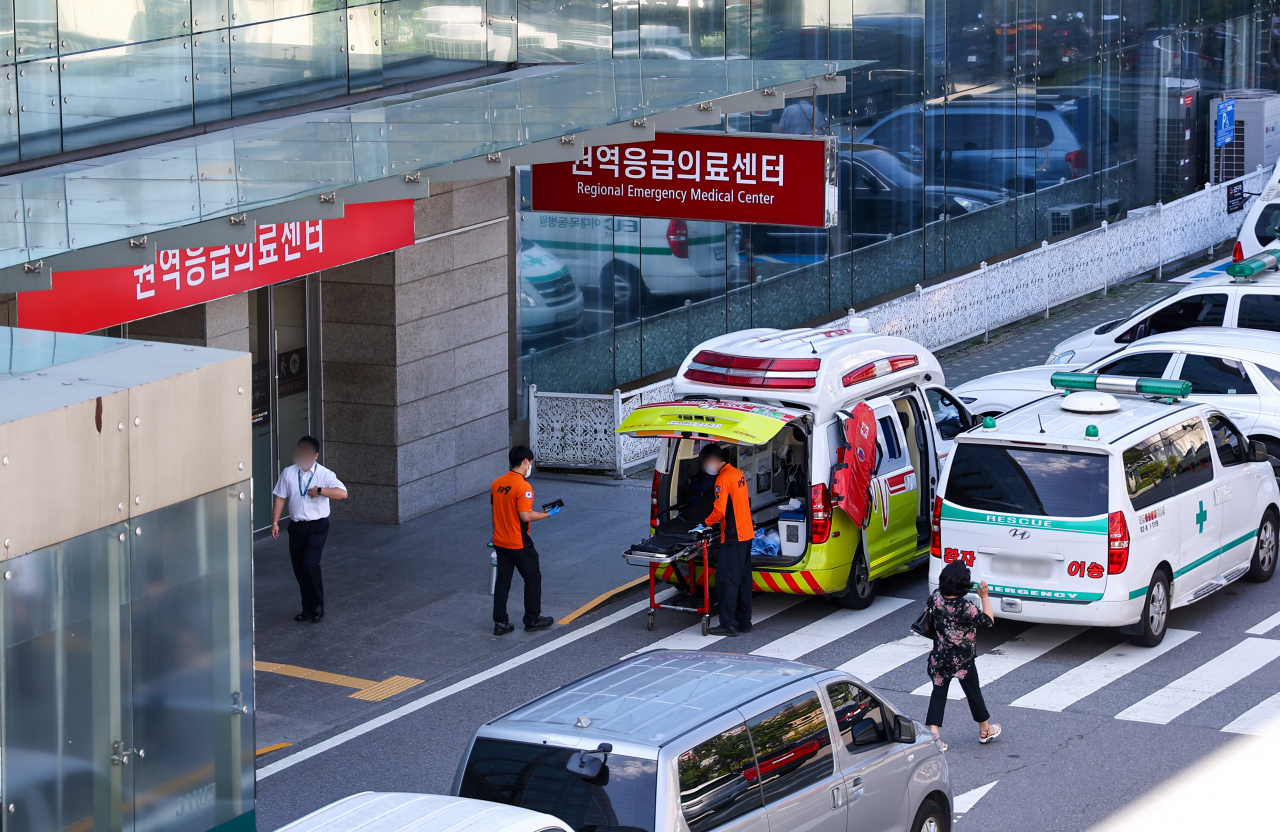 |
Emergency rescue workers and ambulances are seen outside the emergency medical center at a university hospital in Seoul on Tuesday. (Yonhap) |
As South Korea suffers from the prolonged disruption of medical services across the country, government data showed Wednesday that rescue workers' requests for ERs have more than doubled this year compared to the same period last year.
From February to June 25, 119 emergency control centers have selected hospitals for emergency patients on 1,196 occasions, according to the National Fire Agency. This marks an increase of 131 percent compared to 519 such cases in the same period last year.
The 119 emergency service control center assesses the severity of the patient's condition and designates which hospital they should be sent to.
Many rescue workers had previously searched for ERs independently, but the disruption of ER operations in light of the prolonged medical staff shortage has pushed more of them to seek help from the control center.
Last year, locating the hospitals for emergency patients accounted for 1.8 percent of the 119 emergency control center's duties. That number jumped to 4.1 percent this year.
The disruption of ER operations has led to an increasing number of transfers to another ER when rescue workers' first-choice hospitals cannot provide emergency medical care.
Last month, a 28-month-old child was suffering from a high fever but had been turned down by the ERs of 11 hospitals which said they did not have the medical staff to treat the toddler. The girl was taken in by a hospital one hour after her mother called the 119 hotline. She suffered severe brain damage and remains unconscious.
There were 3,597 cases in which an emergency patient was transferred to another hospital between Jan. 1 and Aug. 20 of this year, according to NFA data submitted to Rep. Yang Bu-nam of the main opposition Democratic Party of Korea. Nearly 40 percent, 1,433, of such cases occurred because the hospital in question did not have the necessary medical staff.
According to other NFA data, 17 patients were transferred four or more times as of June 10 this year, compared to 16 cases in all of 2023.
The South Korean government said in a briefing Tuesday that 406 of the 409 ERs across the nation remain operational around the clock, but that 27 of them have reduced the number of beds. While not yet on the verge of total collapse, many major hospitals across the country have reduced their operations due to a severe shortage of medical staff.
Trainee doctors and specialists across the country have left their worksites since February in protest of the government's medical reform, which aims to significantly increase the enrollment quota for medical schools.







